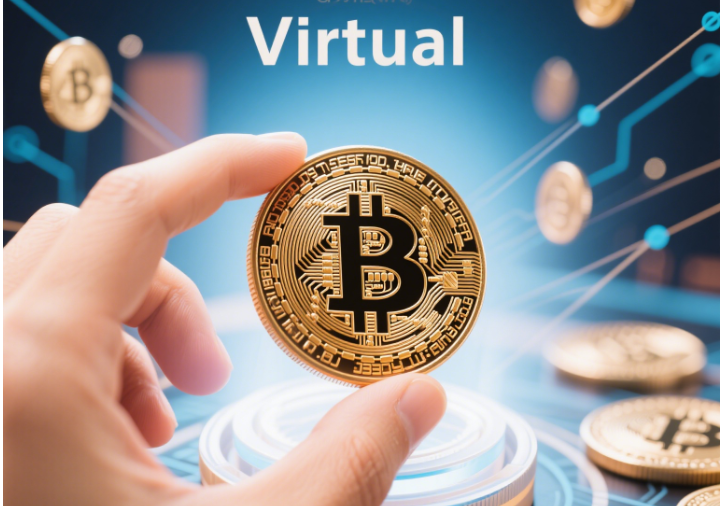In an era where digital interactions are reshaping industries, the convergence of Virtual Reality (VR) and Blockchain is emerging as a transformative force. This dynamic duo is not only revolutionizing how we experience virtual worlds but also redefining concepts of ownership, security, and value in the digital realm. Let’s explore how this synergy is unlocking unprecedented opportunities across sectors like gaming, real estate, education, and healthcare.
1. The Power of VR-Blockchain Integration
Virtual Reality immerses users in 3D environments, enabling lifelike interactions, while Blockchain ensures transparency, security, and decentralization. Together, they address critical challenges in virtual ecosystems:
- Digital Ownership: Blockchain’s immutable ledgers guarantee users full control over virtual assets, such as NFTs in VR games like Decentraland and The Sandbox, where virtual land sells for millions of dollars .
- Interoperability: Cross-chain protocols (e.g., Polkadot, Cosmos) enable assets to move seamlessly between VR platforms, breaking down silos .
- Security: Blockchain’s encryption protects user data and transactions, crucial for VR applications handling sensitive information like biometric data in healthcare simulations .
2. Transformative Use Cases
Gaming and Metaverse Economics
VR gaming platforms are leveraging blockchain to create decentralized economies. For example:
- Decentraland allows users to buy, sell, and develop virtual land using its native token, MANA. Brands like Adidas and Gucci have established virtual stores here, blurring the lines between physical and digital commerce .
- The Sandbox empowers creators to design games and monetize assets through NFTs. Players earn SAND tokens by participating in virtual events or selling digital art .
- CEEK VR uses blockchain to manage virtual concert ticketing, ensuring artists receive royalties instantly while fans enjoy immersive experiences .
Real Estate and Architecture
Blockchain is democratizing property ownership in virtual spaces:
- Virtual Property: Platforms like Cryptovoxels enable users to purchase and trade virtual real estate, with prices driven by demand for prime locations .
- Digital Twins: Architects use VR to visualize designs and blockchain to secure intellectual property rights, ensuring creators are compensated for their work .
Education and Healthcare
- Medical Training: VR simulations powered by blockchain allow medical students to practice surgeries securely, with immutable records of their progress .
- Remote Learning: Platforms like Engage use VR for immersive classrooms, while blockchain credentials authenticate certifications .

3. Technical Challenges and Solutions
Scalability and Latency
- Layer 2 Solutions: Projects like Polygon and Optimism reduce transaction costs and speed up VR interactions on Ethereum .
- 5G Integration: High-speed networks enable real-time VR experiences, as seen in China Telecom’s 5G-powered smart hospitals .
Interoperability
- Cross-Chain Standards: The Open Metaverse Interoperability Group (OMIG) is developing protocols to ensure assets work across VR platforms .
Privacy and Security
- Zero-Knowledge Proofs: These cryptographic tools protect user data while enabling secure transactions in VR .
- Decentralized Identity (DID): Projects like Sovrin allow users to control their digital identities across VR ecosystems .
4. Economic Impact and Investment Trends
- NFTs in VR: The market for VR-related NFTs is booming, with sales exceeding $1 billion in 2024. Collectibles, virtual fashion, and in-game items are driving this growth .
- Decentralized Governance: DAOs (Decentralized Autonomous Organizations) like Axie Infinity’s AXS DAO let communities vote on platform upgrades, fostering user-centric development .
- Investment Surge: Venture capital in VR-blockchain projects reached $3.2 billion in 2024, with a focus on metaverse infrastructure and cross-chain solutions .
5. Future Outlook
- AI Integration: Generative AI will create dynamic VR environments, while blockchain ensures ownership of AI-generated content .
- Cross-Industry Adoption: From retail to manufacturing (AR-assisted assembly), VR-blockchain will redefine how industries operate .
- Regulatory Evolution: Governments like China are drafting policies to support metaverse development, balancing innovation with security .
Conclusion
The fusion of VR and blockchain is not just a technological trend—it’s a paradigm shift. By enabling true digital ownership, interoperability, and decentralized governance, this pairing is building the foundation for the metaverse. As industries embrace these technologies, the future holds limitless possibilities for immersive, secure, and economically vibrant virtual ecosystems.
For the latest updates on Virtual Reality Blockchain, visit Bitora.









Leave A Reply